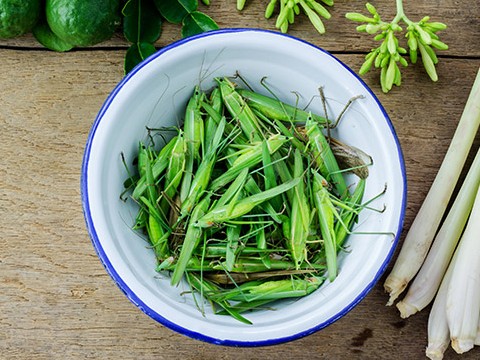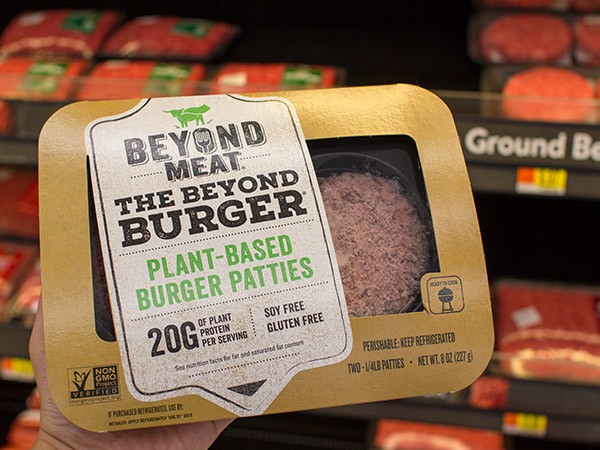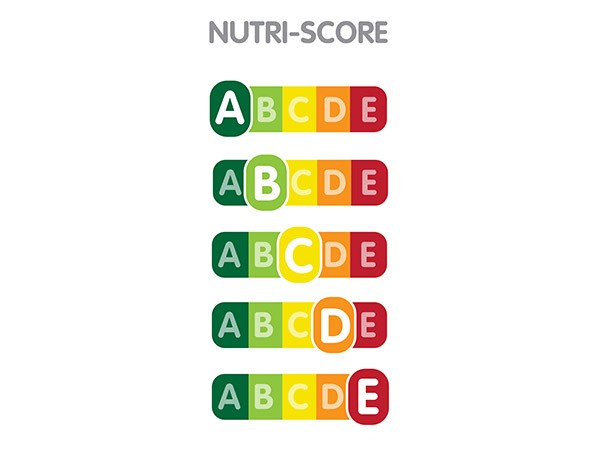
Less sugar, salt and fat – more natural products and ingredients. Less meat and other animal proteins – more vegetal alternatives. Fewer pesticides and CO2 emission – more attention to nature and the climate. All in all, this chess game of ingredients and ‘reformulation’ causes the industry a lot of headaches.
In 2009 the clean label trend was given a huge boost in Western Europe. The number of new product developments rose from 6,000 to 10,000 (Source: Innova Market Insights). Worldwide, the share of products with an ‘organic claim’ rose from 6.3% in the first half of 2013 to 9.5% in the first half of 2015. Alternative preservatives were number 4 on the top-5 of the most important trends for 2016. In 2019, these are still the main themes. A positive thing is that ‘the adventurous consumer’ is number 1. We are open to new flavours, fresh sensations and innovative products. So the consumer is open to the innovations that producers want to surprise them with. But variations of meat are less welcome: worldwide, brands are busy ‘greening’ their assortments with vegetal options. There is an alternative for everything on the market: alternative dairy products, alternative protein sources, alternative sweeteners. Producers have not done developing, and consumers are not yet saturated in their hunger for ‘different’. The industry keeps searching for god alternatives for sugar. Nestlé designed a so-called ‘hollow’ sugar molecule – with the sweet taste, but with fewer calories. Unilever hopes to get more out of stevia in the near future.
The ‘clean label’ concept is not as unambiguous as the term ‘clean’ suggests. It may refer to the elimination of chemical-sounding or artificial ingredients from the ingredient declaration, but also to the use of simpler words for the ingredients to make them sound more natural and understandable to lay persons. A third interpretation is that the label states more and more often what is not in the product: free from.
In a word: the consumer says he wants ‘back to basic’, preferably with a high degree of authenticity and naturalness. Simplifying recipes and more attention to local raw materials are ways for food producers to respond to this trend. A general reduction of the number of ingredients used has taken the place of (merely) getting rid of the number of E numbers. The clean labelling trend can be considered a wake-up call for food manufacturers: they must re-examine ingredients, modify their products. This is less simple than many consumers think, for the influence of one single additive in flavour, bite, colour, shelf life and food safety can be considerable.
Honig, part of KraftHeinz, started five years ago with an extensive trajectory of product improvement to modify their instant meals. It started with a consumer survey to find out what perception people have of naturalness and health in relation to their products, and to what degree clean label could add extra value. It turned out that respondents are finding health, naturalness and nutritional value more and more important. Honig examined 35 different products, instant meals and instant soups in particular, and wherever possible replaced E numbers with natural substances. Of course, the flavour was not allowed to change as a result of the new composition. That is why it took two years to bring the innovated recipes on the market.

Not only commercial companies respond to the growing attention to ingredients. Engineer Wieke van der Vossen is an expert of food safety and labelling and project leader of the ingredient checker of the Dietary centre. ‘At the request of the ministry of Public Health, Welfare and Sports we have developed the “Do I make a healthy choice” app. Upon its introduction it became clear from various parties that there is a need for information on ingredients. To meet this demand, we built in the ingredient checker into the app, intended for everyone who has to or wants to watch a certain ingredient. Users can choose from hundreds of different ingredients and allergens. At a glance, you can see if a certain product contains a certain ingredient. The checker makes the relatively difficult search simpler. Take sugar, for instance: the label may list this as maltose, trehalose, molasses or agave concentrate. If you want to want to know if there is additional sugar when buying a product, the app will filter all of this out, so sugar will be more easily recognised in the future.’
Correct data and clear communication are very important, says the expert. ‘Every day, a data system at the Dietary centre provides us with new information from the food industry about the ingredients they use. We use this data in our work. What strikes me, is that the data is not always correct. My suggestion to the industry is to pay sufficient attention to the online labelling information. That information must be correct too, for it also reaches consumers directly.’
Nutri-Score scores
Ever since the green - read: hard to interpret – checkmark with an inglorious end, it is still not clear what label will replace it in the Netherlands. The Consumers’ Association champions the Nutri-Score, a food choice logo developed in France. With the traffic light colours of green, red and orange and the letters A to E it indicates how healthy of unhealthy a product is. The overall assessment is determined by the number of calories, sugar, salt, fat, proteins, fibres, vegetable, nuts and legumes in the product. Products are given points on the basis of the nutritional value and the ingredients used: negative points for unhealthy and positive points for healthy nutrients. On the basis of the overall score an A, B, C or D will follow. That is convenient, says the consumers’ Association, for it makes products in the same category easier to compare so you don’t need to read the small letters and unclear terms for this. Such a logo also makes it instantly clear whether certain marketing terms on the front of packages are misleading or not.

Foodstuffs producer Nestlé already confirmed that it will introduce the Nutri-Score in as many countries as possible. In the Netherlands this is not yet to be expected, for the ministry of Public Health, Welfare and Sports holds back its introduction. State secretary Paul Blokhuis threatens to abolish introduction ‘as a non-permitted claim’. He is currently having studied how various logo systems, including Nutri-Score, are in line with the Dutch food guidelines and are therefore a good system for Dutch consumers to make healthier choices. Blokhuis does not think ‘it is a smart move of companies to jump to conclusions’. Vegetable producer HAK does not take heed of this: as of 1 September the company will introduce the Nutri-Score logo on all its products in the Netherlands. To be continued. At the end of 2019 the state secretary will give his final decision.
With an eye to climate change and the reduction of meat consumption there is also growing attention to and demand for insects as a high-quality new resource; for human consumption, and especially for animal feed. At this moment, it is permitted in the European Union to use insect flour in the food for farmed fish and pets. It is not yet permitted to feed insect flour to pigs, chickens or cows. For this, EU legislation must be adapted. Feeding insect oil and living insects is permitted for chickens, pigs and cows. The International Platform of Insects for Food and Feed (IPIFF) is a non-profit organisation that represents the interests of insect producers. In a recent vision report the describe the opportunities and challenges for commercial insect farming in Europe now and in 2030. In mid-August an update was published on the laws and regulations that are relevant to insect farming for human nutrition. They expect the first authorisations for permission of insects as novel food in the European Union to be given as early as 2020. At the moment (1 August 2019) twenty applications have been submitted for permission of insects as novel food, and five applications for insects as traditional foodstuffs from third countries. This concerns, among others, mealworms, crickets, the locusts and honey bee pupas (summaries have been published on the web portal of the European Commission (EC).
To return to that important trend: the ‘greening’ of the assortments. Vegetal is not only considered ‘healthier’ but also more sustainable. Organic is central in this, consumer demand for products and ingredients with the claim ‘organic’ is rising. But it remains the question whether ‘green’ and organic is really ‘green’ and organic is really the right answer to countering climate change. Immediately after publication of the IPCC report, several newspapers stated that cows pose a serious climate hazard, especially because of the emission of methane gas. German scientist Frank Mitloehner of UC Davis University heavily criticised this news coverage in the Telegraaf newspaper’(16 August 2019): ‘Really bollocks!’ he reacted from California. ‘This IPCC report is about land use and how we should handle fertile ground wisely. Only a small side alley concerns nutrition. But nowhere does the UN give the advice to abandon the consumption of meat. Nowhere it says: let’s go vegan! That would be completely irresponsible.’ And Martin Scholten, director of Animal Sciences at Wageningen University, said in the newspaper that nearly all colleagues reacted dismayed to the vegan twist that journalists gave to the IPCC report. ‘I understand that the slogan sounds nice: less meat, less emission, so no climate problem. But it is not correct. If you would want to feed the world purely vegetatively, you would need many times more agricultural land.’
Rudy Rabbinge (emeritus professor Sustainable Development and Food security – WUR) recently argued in NRC newspaper (15-08-2019) ‘that though organic agriculture may contribute to a social need that we can afford in the Netherlands, for worldwide food security and the environment and climate it is not acceptable when dogmatics replaces thinking. All in all, food security in the world does not benefit from a method of agriculture that is not very productive’, he states. ‘The environment is not served this way, and neither is the ability to respond to the threat of climate change.’
To be continued...
Source: © Vakblad Voedingsindustrie 2019